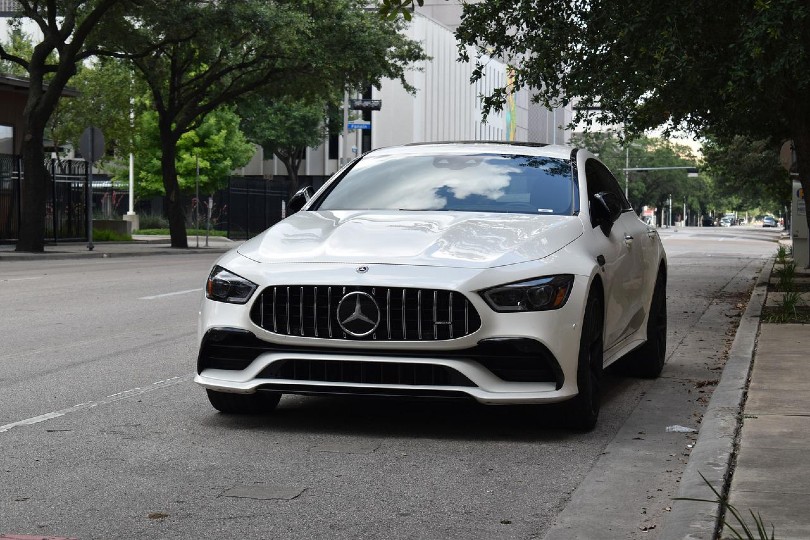How Much Is Car Insurance in Oregon? (Updated in 2025)
-
Pete Ortiz
- Last updated:

Car insurance rates vary greatly from state to state. The price discrepancy is due to many factors, including local legislation, the minimum required coverage, the number of people, and the number of accidents. How much does car insurance in Oregon cost this year? Less than you might think.
Oregon actually has one of the lowest costs for car insurance in the entire country despite having an above-average cost of living in general. That is great news for drivers looking for some good news about costs. In fact, Oregon’s average annual cost for car insurance is far lower than its largest neighbor California.
Here is how much car insurance is in Oregon this year.
 The Average Cost of Car Insurance in Oregon
The Average Cost of Car Insurance in Oregon
The cost of full coverage auto insurance in Oregon is $1,675 per year. That breaks down to $139 per month. The cost of full coverage auto insurance in Oregon is $325 less per year, cheaper than an average American’s cost. The lower cost for Oregon drivers is attributed to low population, low population density, and a higher quality of both urban and rural roads than average. All of that contributes to great auto insurance rates.
The cost of minimum coverage auto insurance in Oregon is $677 per year. That works out to be roughly $56 per month. The average cost for minimum coverage insurance is slightly more expensive than the national average. The national average cost for annual minimum coverage is $545 per year. The average blended cost of auto insurance across the state is around $70 per month.
Oregon also has a very mild climate. The state only averages four inches of snow per year. By comparison, Washington sees fourteen inches of snow per year. The low amounts of snowfall keep the roads safe and in better condition than states with higher snowfall rates. These climate factors help keep Oregon’s auto insurance rates lower than average.

Cost of Car Insurance by Top 3 Companies
The three largest companies in Oregon in terms of market share are Farmers Insurance, Progressive, and State Farm. These three companies make up nearly half of all Oregon insurance policies. All of these companies offer similar rates and are national brands.
| Farmers | Progressive | State Farm | |
| Minimum Coverage | $635 | $599 | $554 |
| Full Coverage | $1,160 | $1,328 | $1,147 |
| Average | $898 | $963 | $850 |
In Oregon, the lowest average cost for insurance comes from State Farm. The average annual cost for full coverage is also much lower than the state average. $1,147 is over $500 cheaper than the average cost across the state. That translates to some big savings for certain drivers.
Farmers and Progressive also offer competitive rates with premiums that are significantly lower than average. Larger insurance companies have more leeway to offer lower annual prices than smaller companies. However, some people do not like the impersonal customer service that large companies provide.
Farmers is the second least expensive option, with prices that are very similar to those offered by State Farm. Progressive is the most expensive out of these three, but the average annual cost for full coverage is still $300 lower than the state average. Some of the most expensive national insurance brands operating in Oregon include MetLife and Allstate, which both have rates that exceed the state average for full coverage insurance.
It is important to note that the average cost for insurance blends every individual policy together. Individual policies can be much higher than the average cost based on a variety of different factors.
Things That Will Affect Your Insurance Costs
There are five main factors that affect the final cost of an auto insurance policy. Each of these factors can cause wild swings that can cause some policies to double in price over other similar ones. Insurance is all about risk assessment and risk evaluation. These factors change the risk factors and, therefore, can change the price of your policy.

Age
Age is one of the factors that weigh on cost the most. Younger drivers typically see costs far higher than older drivers. The most expensive age to be insured is 18 years old. The cost to insure an 18-year-old driver for a year with full coverage is nearly three times as much as it is to insure a 40-year-old driver. All things being the same, the age of the drivers can affect the price by that much. The average annual premium cost for an 18-year-old is nearly $4,500 compared to just $1,500 for a 40-year-old driver with a clean record.
Drivers won’t see any price relief until they reach at least 25 years of age. 20-year-old drivers can expect to pay just south of $3000 per year for full coverage. That price drops to just $1,750 for a 25-year-old driver in good standing.
Location
Location is another factor that can dramatically change the cost of car insurance. Rural areas typically have lower average costs than higher density urban areas. In Oregon, Portland has some of the highest costs for auto insurance, and the city typically sees average costs run 25% higher than the rest of the state. For comparison, the small city of Bend, Oregon, sees prices run 10% lower than average. That means someone moving from Portland to Bend could see a reduction of up to 35% per year on their car insurance.
If you are curious, you can put in nearby zip codes to see what neighborhoods have the best rates for car insurance. Each zip code gets a price based on population density, the number of cars on the road, and the prevalence of accidents, which can change the price from area to area.

Vehicle
The type of vehicle always plays a role in the cost of car insurance. The value of the vehicle, age of the vehicle, type of vehicle, and even color of the vehicle can affect the final cost of car insurance. More valuable vehicles will command higher premiums than cheaper cars. Red cars are more expensive to insure than beige cars. Cars that have a very high average annual mileage, like trucks, cost more to insure than leisure cars that only get driven a few times per month.
An average sedan can cost up to 40% less to insure than a brand-new sports car. Cars that are driven less than 6,000 miles per year are cheaper to insure than cars that are driven more than 18,000 miles per year. All these things play a role, so it is important to be honest about the details when getting a quote. It is also important to consider when buying a new car. A great deal on a used Audi might sound good in theory until you realize the insurance cost is going to be 30% more than the old Honda you were considering instead.
Driving History
Any incident you have behind the wheel can potentially translate to much higher insurance costs. That is true even if you technically are not at fault. A simple speeding ticket can raise rates by as much as 25%. An at-fault accident can boost costs by 50%. If you are convicted of a crime behind the wheel, such as DUI, manslaughter, or fleeing the scene of an accident, you could see your rates rise by as much as 100% or more. It is important to be careful when you are on the road because a basic traffic infraction can cost you hundreds of dollars over the lifetime of your vehicle.
Credit Score
One thing that can actually heavily affect your monthly car insurance cost is your credit score. A low credit score can produce quotes much higher than for someone with an excellent credit score. This can be discouraging because credit rating has nothing to do with your driving ability, but nevertheless, it does have a huge impact on pricing.
For example, in Oregon, someone with a poor credit score (300-579) can expect to pay over double the price as someone with an excellent credit score (800+). The average monthly cost for someone with a poor credit rating is $120 per month, which is $50 per month, higher than the average blended cost of $70.
Insurance companies believe people with lower credit have a higher chance of missing payments and a higher chance of filing a claim than someone with excellent credit. That translates to higher monthly costs.
Ways To Save Money on Car Insurance
One of the best ways to try and save some money on car insurance is to get a large number of quotes. Since car insurance rates are so dependent on a host of different factors, some companies weigh each factor differently. One company might take credit score into higher consideration than another. This can lead to an individual receiving a large spread of quotes using the same information. Shopping around, gathering information, and comparing is the simplest way to save money on car insurance in Oregon.
Another good way to try and save money on car insurance is to raise your credit score. Easier said than done, but the payoff can be huge. You can save $400 per year on your annual insurance rates if you raise your credit score from 660 to 670. A higher credit score can save you money across the board, so it might be worth investing in if you find yourself struggling to get a good insurance rate.
 Conclusion
Conclusion
Oregon has some of the best car insurance rates in the country for full coverage. Oregon has slightly above average costs for minimum coverage. Overall, Oregon is a good place to buy car insurance. It has good brands, fair prices, and great driving conditions. On average, the typical Oregon driver pays $70 per month on car insurance.
Featured Image Credit: ElisaRiva, Pixabay
Contents

 The Average Cost of Car Insurance in Oregon
The Average Cost of Car Insurance in Oregon